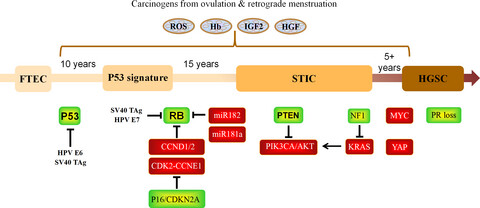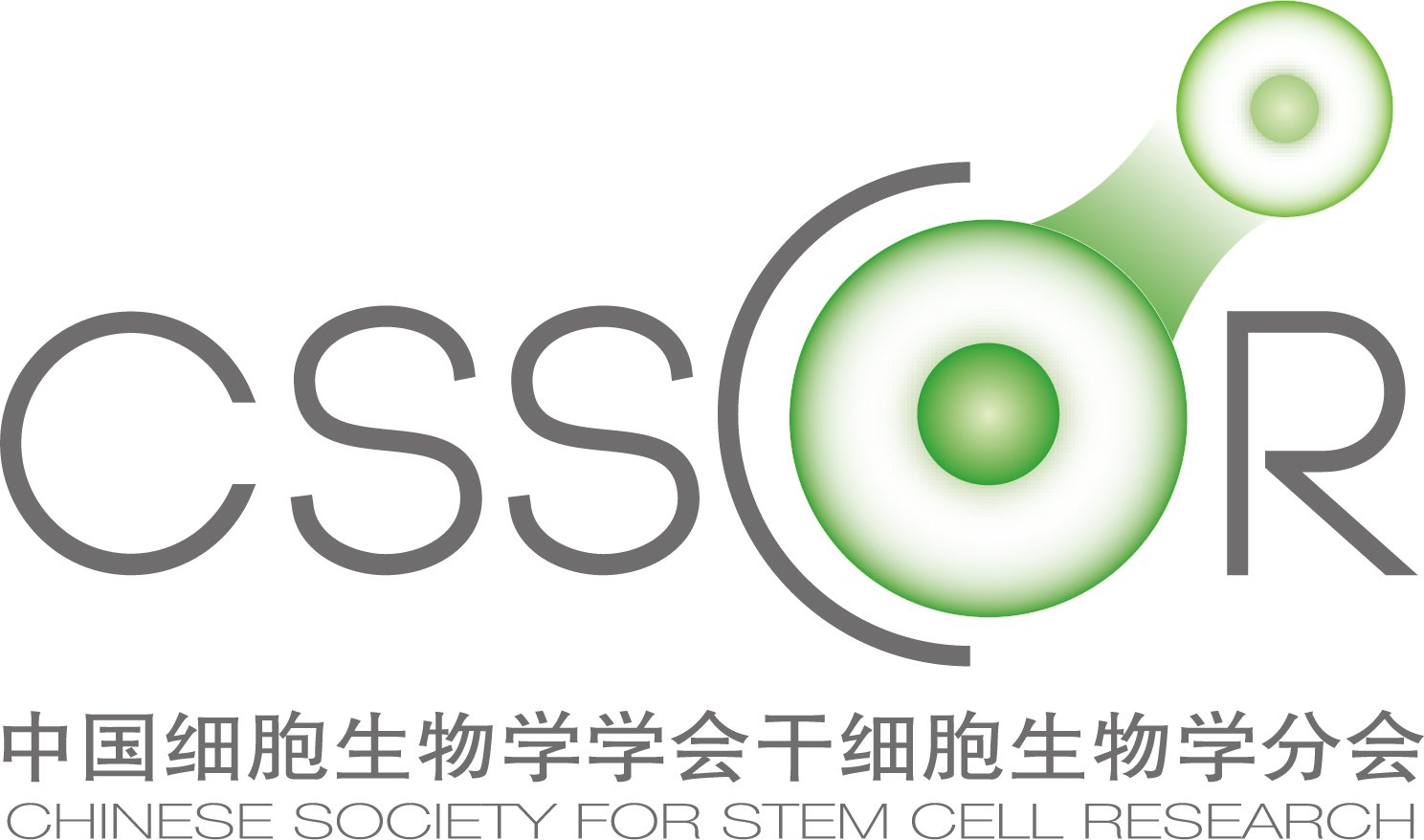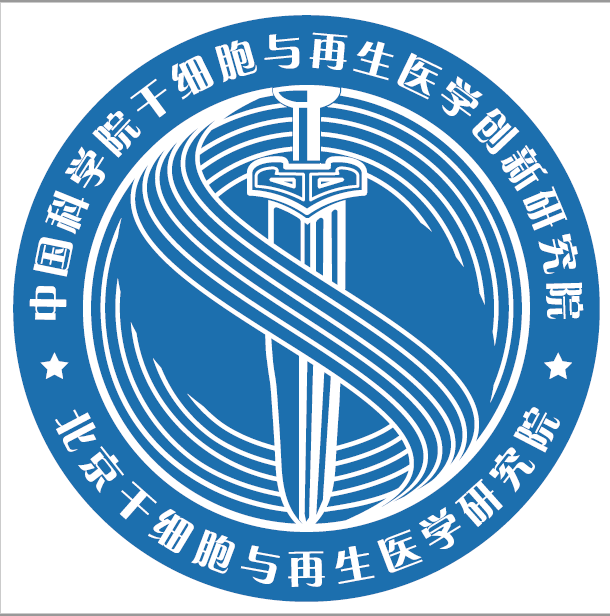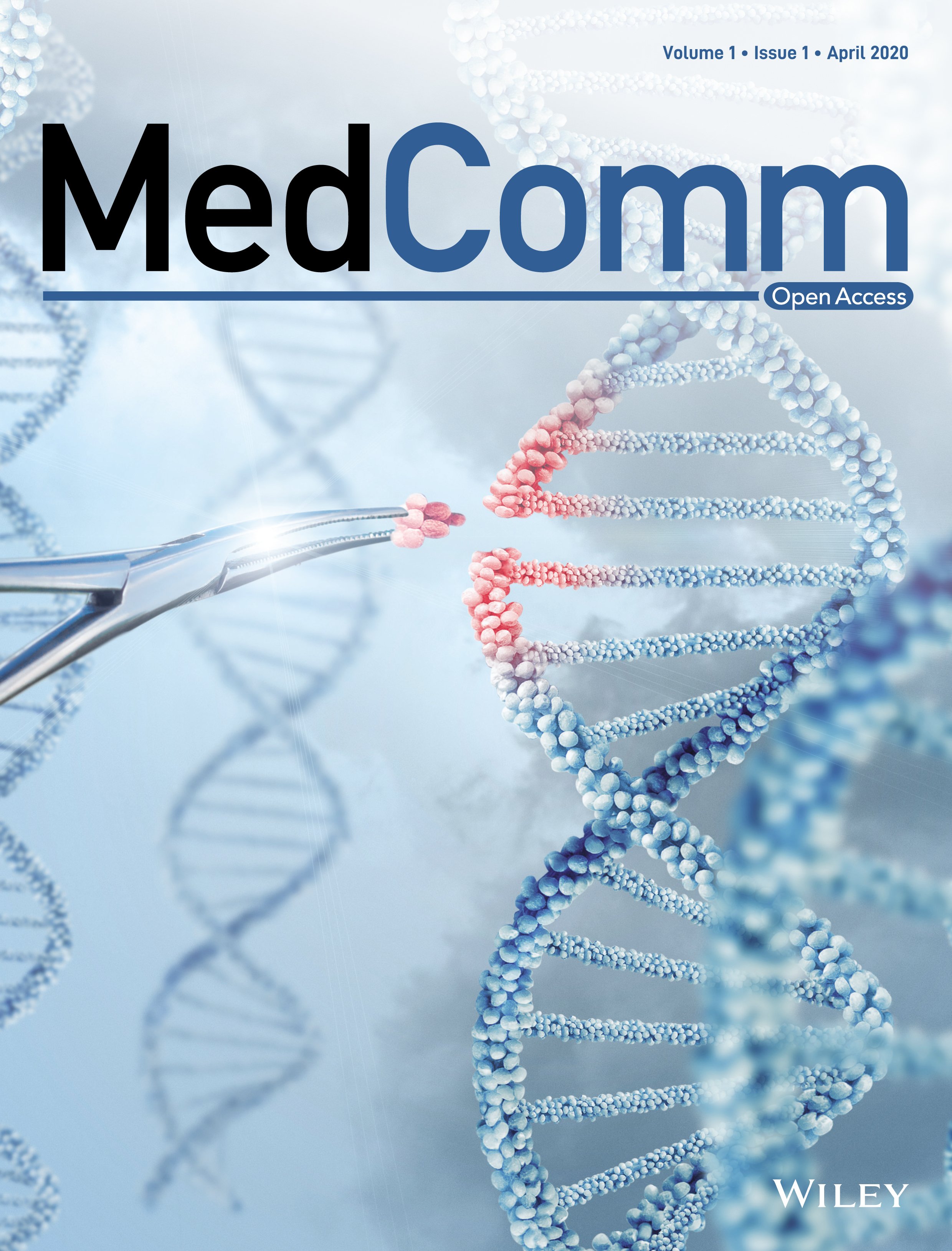Journal list menu
Export Citations
Download PDFs
Articles published in 2021
Exosomes from adipose-derived stem cells and application to skin wound healing
- First Published: 17 January 2021
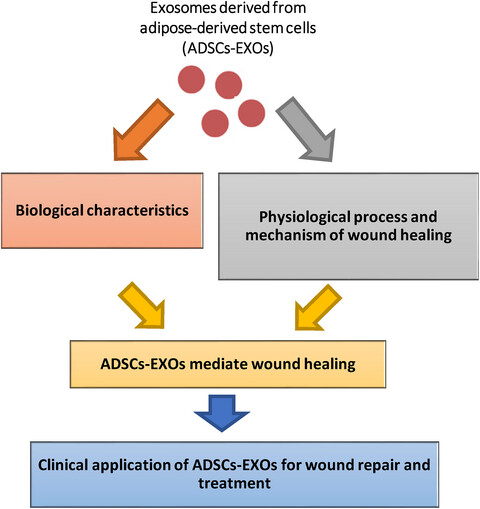
This review describes the mechanisms whereby exosomes (EXOs) derived from adipose-derived stem cells (ADSCs) regulate wound healing and their clinical application. In the wound, ADSCs-EXOs modulate immune responses and inflammation, promote angiogenesis, accelerate proliferation and re-epithelization of skin cells and regulate collagen remodelling, which inhibits scar hyperplasia. ADSCs-EXOs have the potential to be used in the clinic, as they can improve fat grafting, promote wound healing of diabetic patients and act as a carrier and combined scaffold for treatment, leading to scarless cutaneous repair.
Circadian clock genes promote glioma progression by affecting tumour immune infiltration and tumour cell proliferation
- First Published: 13 January 2021
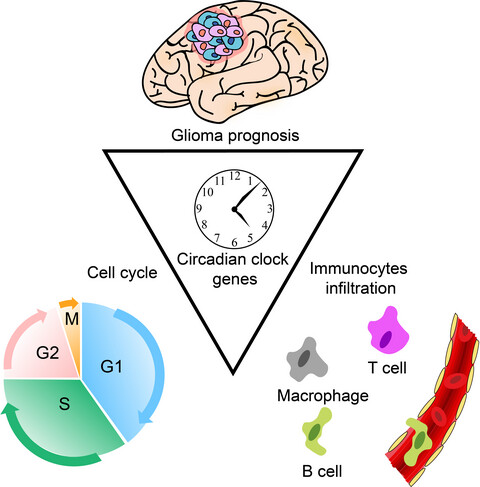
Dysregulated circadian clock genes were associated with glioma grades and the IDH status. Prognostic model suggests circadian clock genes affect glioma progression. The GO and GSEA enrichment analysis suggested dysregulated circadian clock genes can affect glioma through interfering cell cycle and influencing immunocytes infltration.
Intrapulmonary distal airway stem cell transplantation repairs lung injury in chronic obstructive pulmonary disease
- First Published: 07 May 2021
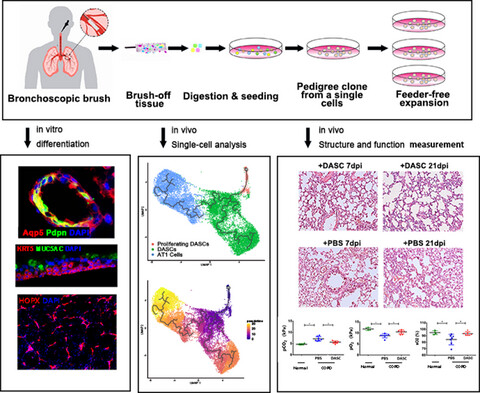
Mouse and human DASCs could be indefinitely expanded and were able to further differentiated into mature alveolar structures during in vitro cultures. Single-cell analysis indicated that the engrafted cells expressed typical cellular markers of type I alveolar cells as well as the specific secreted proteins. Transplantation of human DASCs derived from chronic obstructive pulmonary disease (COPD) patients into the lungs of NOD-SCID mice with COPD repaired the tissue damage and improved the pulmonary function.
Inhibition of FGF-FGFR and VEGF-VEGFR signalling in cancer treatment
- First Published: 02 March 2021
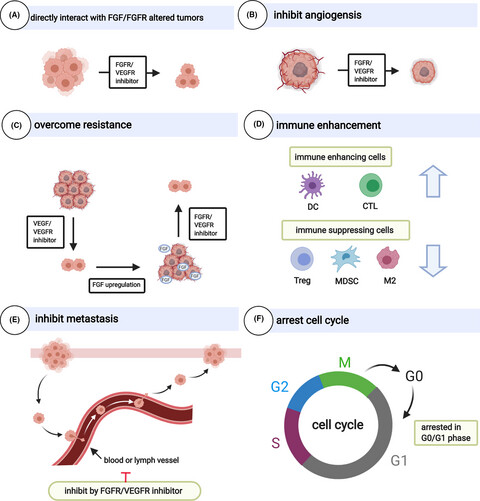
Targeted therapies interfering with oncogenic driver alterations have achieved remarkable success in limited types of cancer with certain driver gene alterations (Nat Rev Clin Oncol, 2017; Lancet Oncol, 2018; Jama, 2019; Lancet, 2017). Novel therapeutics targeting other cancer driver alterations are urgently needed to be developed to improve the life quantity of the patients and prolong their life span. The FGF-FGFR signalling plays pivotal roles in both the physiological and oncogenic processes (Nat Rev Clin Oncol, 2019), but FGFRs are constitutively active in malignant cells because of the upregulation of FGF and FGFR genetic alterations (Nat Rev Clin Oncol, 2019). Targeting FGF-FGFR signalling is a promising method to treat FGFR-altered tumours (New Engl J Med, 2019; Lancet Oncol, 2020), but patients receive limited effects by targeting only the FGF-FGFR pathway in most clinical practice (Nat Rev Cancer, 2017; Eur J Med Chem, 2020). VEGF-VEGFR signalling pathway also attracts our attention. The growth of tumours relies on blood supply and VEGFs are proved to be the most important angiogenic factors (Nat Rev Drug Discov, 2016). Accordingly, inhibition of the VEGF-VEGFR signalling pathway is believed to suppress tumour development (New Engl J Med, 1971). Here we propose the simultaneous inhibition of the FGF-FGFR pathway and VEGF-VEGFR pathway. In terms of mechanism, the combination can target tumour cells and tumour microenvironment at the same time (Clin Cancer Res, 2019). FGFR/VEGFR inhibitors have better effects and broaden the indications in clinical use (Nat Commun, 2020; JAMA Oncol, 2018; The Lancet Oncology, 2020).
tsRNAs: Novel small molecules from cell function and regulatory mechanism to therapeutic targets
- First Published: 28 January 2021
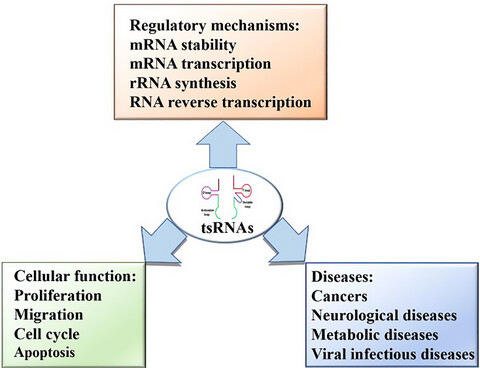
tsRNAs are generated under stress condition which are functional molecules. Due to their regulatory mechanism in regulating mRNA stability, transcription, ribosomal RNA (rRNA) synthesis and RNA reverse transcription, tsRNAs are significantly involved in the cellular function, including cell proliferation, migration, cell cycle and apoptosis, as well as the occurrence and development of a variety of diseases.
Programmed cell death in spinal cord injury pathogenesis and therapy
- First Published: 27 January 2021
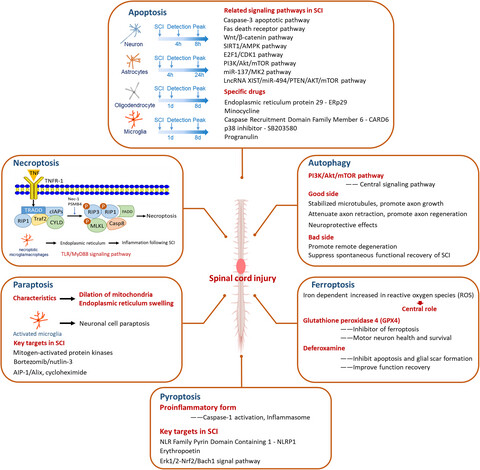
Different types of programmed cell death (PCD) play different roles in spinal cord injury. PCD is an active cell death mediated by a cascade of gene expression events, and it is crucial for elimination unnecessary and damaged cells, as well as a defense mechanism. PCD consists of a series of activities, such as apoptosis, necroptosis, autophagy, ferroptosis, pyroptosis and paraptosis. This figure indicates how how apoptosis, necroptosis, autophagy, ferroptosis, pyroptosis and paraptosis are involved in spinal cord injury.
Bioinformatic analyses hinted at augmented T helper 17 cell differentiation and cytokine response as the central mechanism of COVID-19–associated Guillain-Barré syndrome
- First Published: 10 March 2021
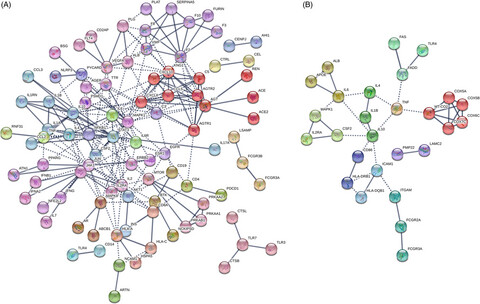
Functional protein-protein association networks of (A) COVID-19– and (B) GBS-related genes were analyzed by STRING. Genes associated with the two disease entities (COVID-19, disease id: C000657245, version 4, N.PMIDs ≥ 4; GBS, disease id: C0018378, Gene-Disease Association Score ≥ 0.02) were retrieved from DisGeNET, a knowledge platform for disease genomics. Only highly confident interactions derived from ‘Experiments’, ‘Databases’, ‘Co-expression’ and ‘Co-occurrence’ with the minimum required interaction score of 0.900 were shown. The Markov cluster (MLC) algorithm with an inflation parameter of 3 was used for network clustering.
Single-cell transcriptomes of mouse bladder urothelium uncover novel cell type markers and urothelial differentiation characteristics
- First Published: 03 February 2021
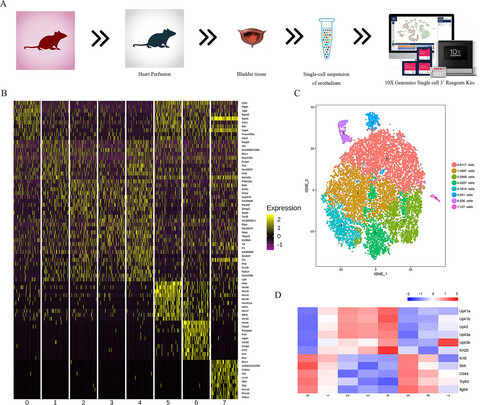
Much of the information to date in terms of subtypes and function of bladder urothelial cells were derived from anatomical location or by the expression of a small number of marker genes. To have a comprehensive map of the cellular anatomy of bladder urothelial cells, we performed single-cell RNA sequencing to thoroughly characterize mouse bladder urothelium. A total of 18 917 single cells from mouse bladder urothelium were analysed by unbiased single-cell RNA sequencing. The expression of the novel cell marker was confirmed by immunofluorescence using urinary tract infection models. Unsupervised clustering analysis identified 8 transcriptionally distinct cell subpopulations from mouse bladder urothelial cells. We discovered a novel type of bladder urothelial cells marked by Plxna4 that may be involved with host response and wound healing. We also found a group of basal-like cells labelled by ASPM that could be the progenitor cells of adult bladder urothelium. ASPM+ urothelial cells are significantly increased after injury by UPEC. In addition, specific transcription factors were found to be associated with urothelial cell differentiation. At the last, a number of interstitial cystitis/bladder pain syndrome–regulating genes were found differentially expressed among different urothelial cell subpopulations. Our study provides a comprehensive characterization of bladder urothelial cells, which is fundamental to understanding the biology of bladder urothelium and associated bladder disease.
A novel mouse model for liver metastasis of prostate cancer reveals dynamic tumour-immune cell communication
- First Published: 21 May 2021
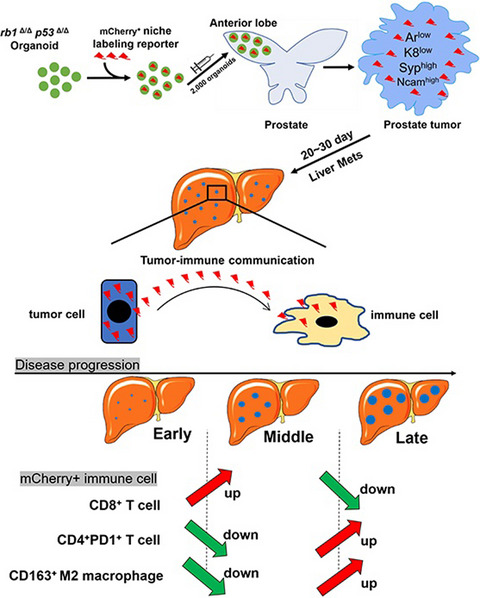
Liu et al. developed a rapid and immune sufficient mouse model for liver metastasis of prostate cancer via orthotopic injection of organoid cultures from PbCre+; rb1f/f;p53f/f mice. Using a niche-labeling lentiviral reporter, a dynamic tumor-immune cell communication at different phases in the liver metastatic niche is depicted. A paucity of CD8+ T cells and abundant PD1+ CD4+ T cells and CD163+ M2 macrophages contribute to an immune suppressive liver metastatic niche.
Cellular models of development of ovarian high-grade serous carcinoma: A review of cell of origin and mechanisms of carcinogenesis
- First Published: 25 March 2021
Articles published in 2020
Stem cell therapy for COVID-19, ARDS and pulmonary fibrosis
- First Published: 24 October 2020
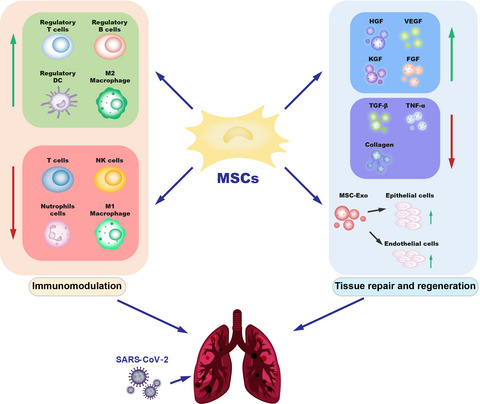
The potential mechanisms of MSCs therapy for COVID-19. MSCs have great therapeutic potential in immunomodulation and tissue repair through secretion of soluble paracrine protein factors and exosomes. MSCs can regulate the functions of a variety of immune cells, secrete several cytokines, promote tissue repair and regeneration, and may play important therapeutic roles in patients with COVID-19. MSCs: mesenchymal stem cells; HGF, hepatocyte growth factor; VEGF, vascular endothelial growth factor; KGF, keratinocyte growth factor; FGF, fibroblast growth factor; TGF-β, transforming growth factor-β; TNF-α, tumor necrosis factor-α; MSC-exo, exosomes.
Advances in mesenchymal stem cell transplantation for the treatment of osteoporosis
- First Published: 18 November 2020
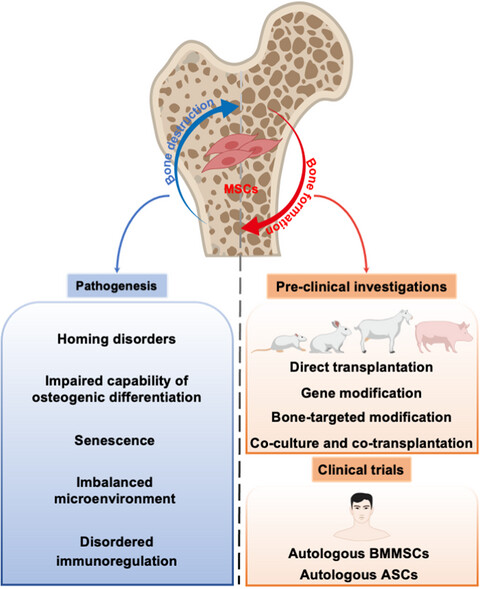
Osteoporosis occurs when the orchestrated balance between bone formation by osteoblasts and bone destruction by osteoclasts breaks down, and this process is closely associated with MSCs. Existing preclinical evidences of MSCs derived from different tissues support MSCs-based cell therapy as a possible radical approach to the prevention and treatment of osteoporosis. Clinical trials of MSC transplantation for osteoporosis mainly focus on the application of autologous cells and will fill the gap of clinical data.
Exosome biogenesis, secretion and function of exosomal miRNAs in skeletal muscle myogenesis
- First Published: 24 June 2020
Detection of SARS-CoV-2 in saliva and characterization of oral symptoms in COVID-19 patients
- First Published: 19 October 2020
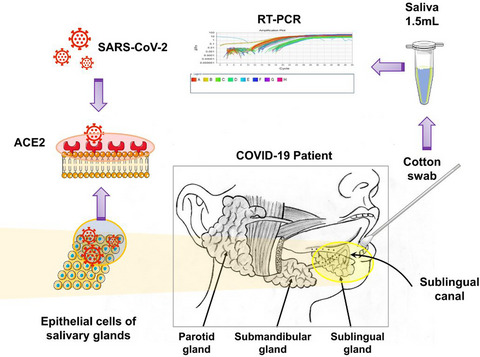
In this study, based on the confirmation of ACE2 receptor expression in salivary glands through database analysis, it was assumed and confirmed that RNA of SARS-COV-2 could be detected in saliva samples. At the same time, we also clinically observed that the initial oral-related symptoms of SARS-COV-2 infection may be amblygeustia and dry mouth.
Network pharmacology and molecular docking analyses on Lianhua Qingwen capsule indicate Akt1 is a potential target to treat and prevent COVID-19
- First Published: 03 November 2020
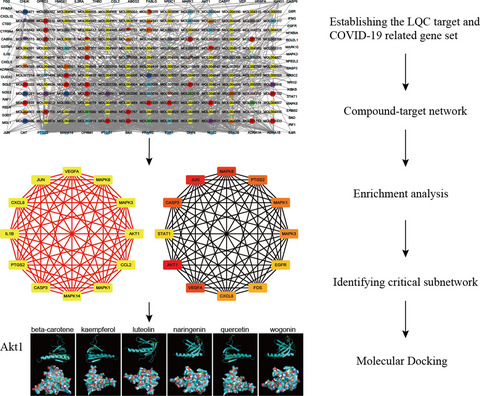
A Lianhua Qingwen capsule (LQC) target and COVID-19 related gene set is established to construct compound-target pharmacology network. Gene ontology and Kyoto Encyclopedia of Genes and Genomes analysis indicate the regulating effect of LQC on apoptosis, antivirus, immune defense, and inflammatory response. Protein-protein interaction network and critical subnetworks are constructed to identify hub gene target. The most significant gene, Akt 1, is selected to perform molecular docking with active compounds of LQC. Six compounds are finally recognized as potential anti-COVID-19 agents.
STAT3 and its targeting inhibitors in osteosarcoma
- First Published: 31 December 2020
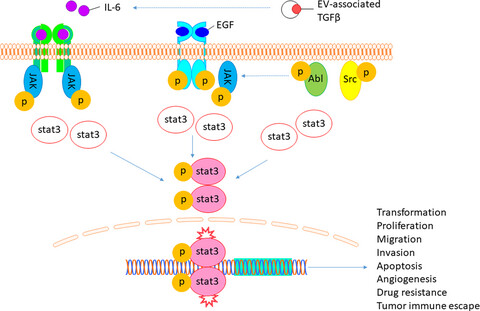
Signal transducer and activator of transcription 3 (STAT3) is a member of the STAT protein family, vitally important for eukaryotic cells. We review the molecular structure and function of STAT3 and its isoforms, highlighting signalling pathways for the regulation of gene transcription. A critical appraisal of STAT3 in cancers, such as osteosarcoma, is provided emphasizing potential therapeutic approaches targeting STAT3 and its inhibitors
The long non-coding RNA landscape in triple-negative breast cancer
- First Published: 13 December 2020
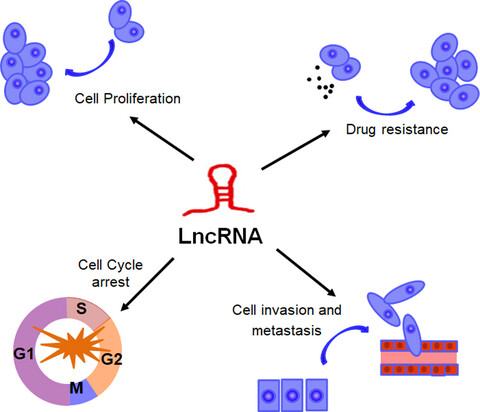
In current review, we accumulated literature to the understanding of lncRNAs biogenesis and function, as well as the latest findings of novel lncRNAs-based therapeutics in TNBC. We also present the current state of knowledge concerning the expression and regulation of lncRNAs in TNBC, and discuss the future development of lncRNA-based strategies for clinical TNBC patients.
Emerging role of targeting macrophages in rheumatoid arthritis: Focus on polarization, metabolism and apoptosis
- First Published: 12 June 2020
Role of exosomal microRNAs in lung cancer biology and clinical applications
- First Published: 11 May 2020




